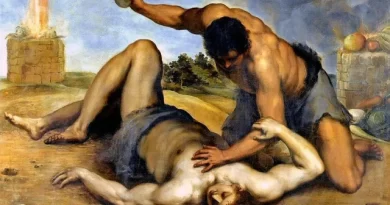The story of the jews returning to judah – यहूदियों के यहूदा लौटने की कहानी
The story of the Jews returning to Judah, also known as the Return from Exile, is a pivotal chapter in Jewish history. This event marks the end of the Babylonian Exile and the beginning of the restoration of the Jewish community in their ancestral homeland, Judah.
In 586 BCE, the Babylonian Empire, under King Nebuchadnezzar II, conquered Jerusalem, destroyed the First Temple, and exiled a significant portion of the Jewish population to Babylon. This period, known as the Babylonian Captivity, lasted for about 70 years and had profound effects on Jewish religion, culture, and identity.
The turning point came in 539 BCE when the Persian Empire, led by King Cyrus the Great, conquered Babylon. Unlike the Babylonians, the Persians had a more lenient policy towards conquered peoples. Cyrus issued a decree that allowed exiled peoples, including the Jews, to return to their homelands and rebuild their temples.
The decree of Cyrus is recorded in the Bible in the Book of Ezra (Ezra 1:1-4). It states.
“In the first year of Cyrus king of Persia, in order to fulfill the word of the Lord spoken by Jeremiah, the Lord moved the heart of Cyrus king of Persia to make a proclamation throughout his realm and also to put it in writing: ‘This is what Cyrus king of Persia says: “‘The Lord, the God of heaven, has given me all the kingdoms of the earth and has appointed me to build a temple for him at Jerusalem in Judah. Any of his people among you may go up to Jerusalem in Judah and build the temple of the Lord, the God of Israel, the God who is in Jerusalem, and may their God be with them.'”
Following Cyrus’s decree, a significant number of Jews decided to return to Judah. The first group was led by Sheshbazzar, a prince of Judah, and later by Zerubbabel, a descendant of the Davidic line, and Joshua the High Priest. They were accompanied by approximately 50,000 Jews, according to the biblical account.
Upon their return, the exiles found Jerusalem in ruins. Despite numerous challenges, including opposition from neighboring peoples and internal disputes, they focused on rebuilding the Temple. The foundation was laid in 536 BCE, and after a long period of delays and difficulties, the Second Temple was completed in 515 BCE during the reign of Darius the Great, another Persian king.
Years later, additional groups of Jews returned under the leadership of Ezra and Nehemiah. Ezra, a scribe and priest, arrived in Jerusalem around 458 BCE with a mission to teach the laws of God and restore religious practices. Nehemiah, who served as a cupbearer to King Artaxerxes I, was appointed governor of Judah. He arrived around 445 BCE and took charge of rebuilding Jerusalem’s walls, providing the city with security and stability.
Both Ezra and Nehemiah implemented significant religious and social reforms. Ezra emphasized the importance of the Torah and led a public reading of the Law, renewing the covenant between God and the people of Israel. Nehemiah focused on rebuilding the city’s infrastructure and addressing social injustices, such as the exploitation of the poor.
The return from exile and the rebuilding of the Temple marked a new era in Jewish history. It was a period of religious revival and cultural renaissance. The Second Temple period saw the development of many religious practices and traditions that are central to Judaism today. The experience of exile and return also reinforced the Jewish people’s sense of identity and their commitment to their faith and heritage.
The story of the return to Judah is a testament to the resilience and faith of the Jewish people. It highlights their determination to rebuild their lives and their community despite immense challenges. The return from exile is a foundational narrative in Jewish history, symbolizing hope, renewal, and the enduring bond between the Jewish people and their homeland.
The story of the jews returning to judah – यहूदियों के यहूदा लौटने की कहानी



